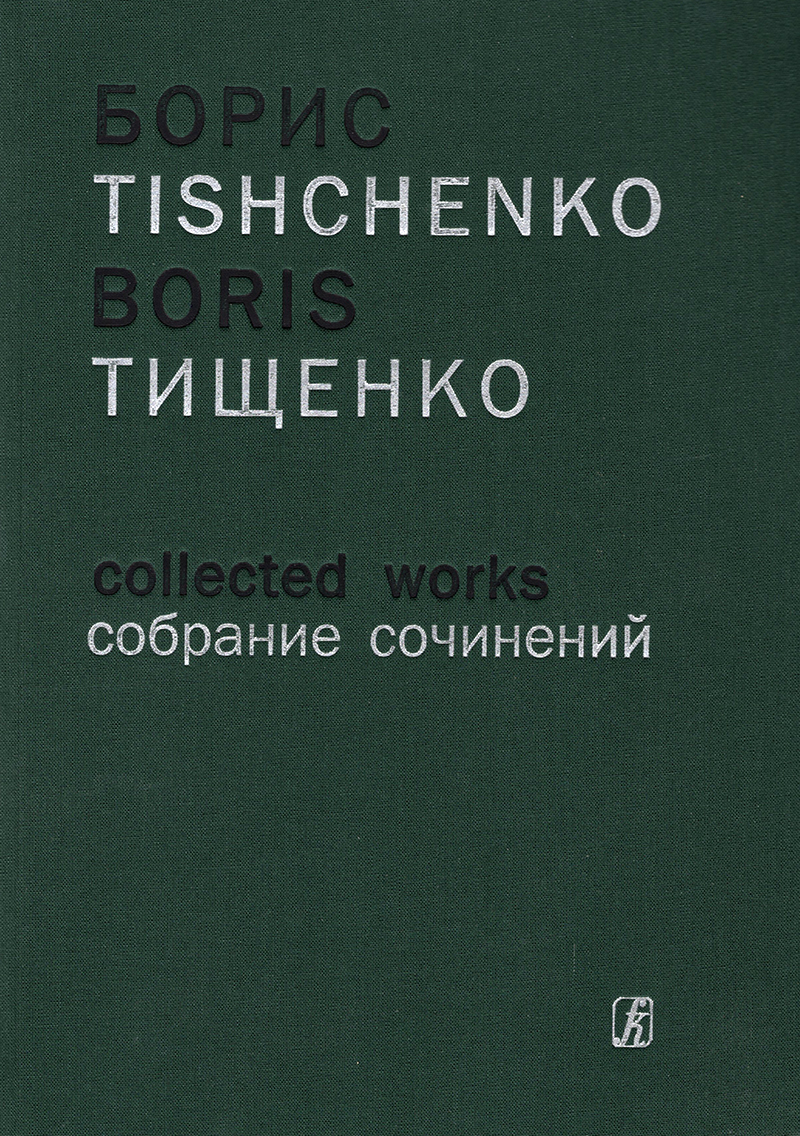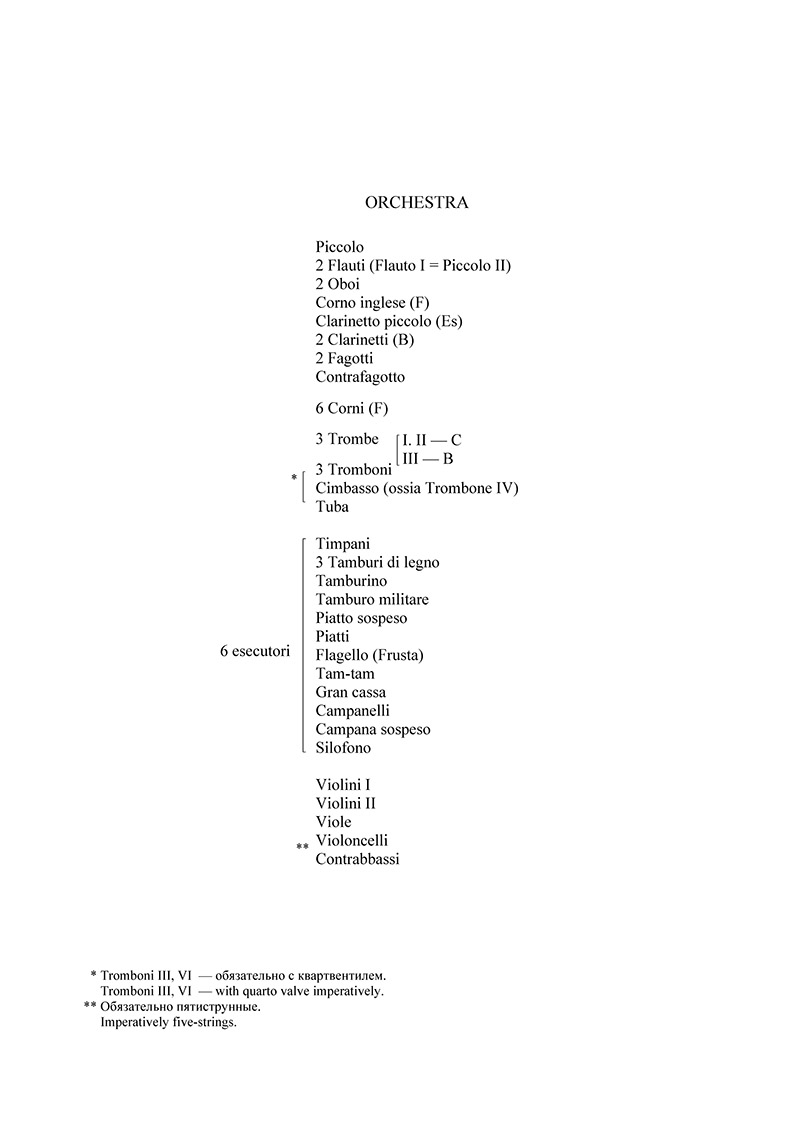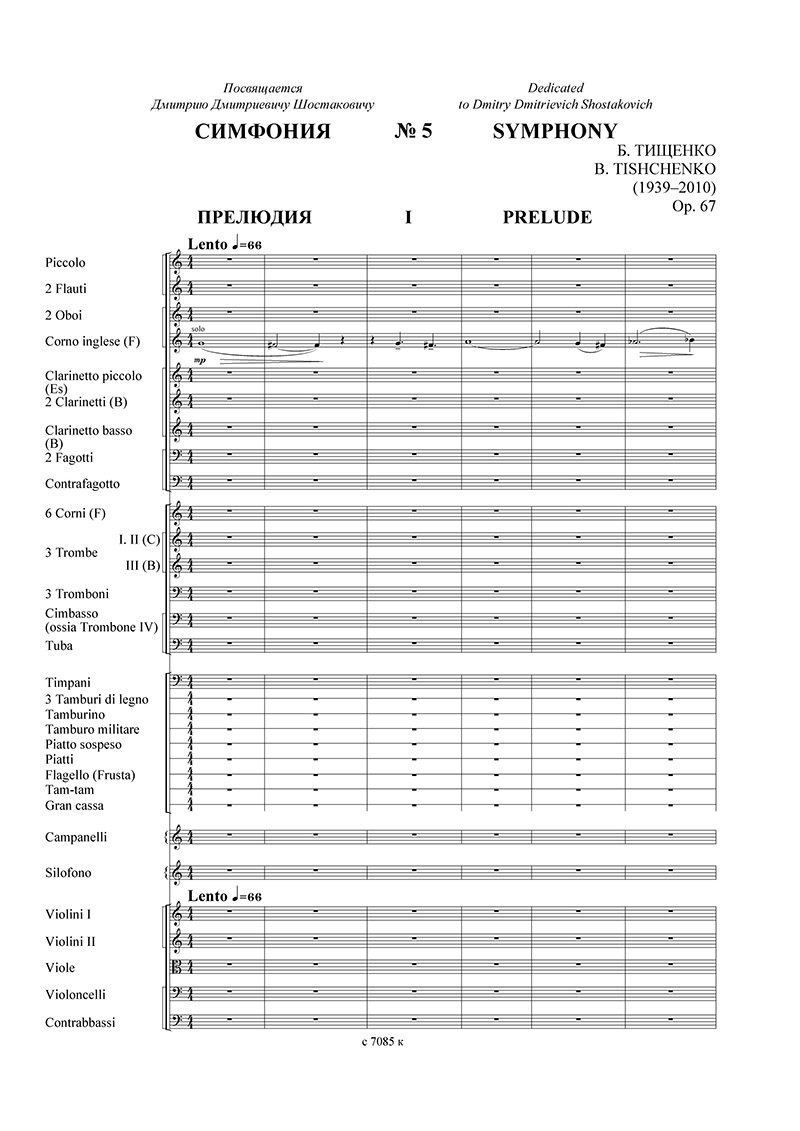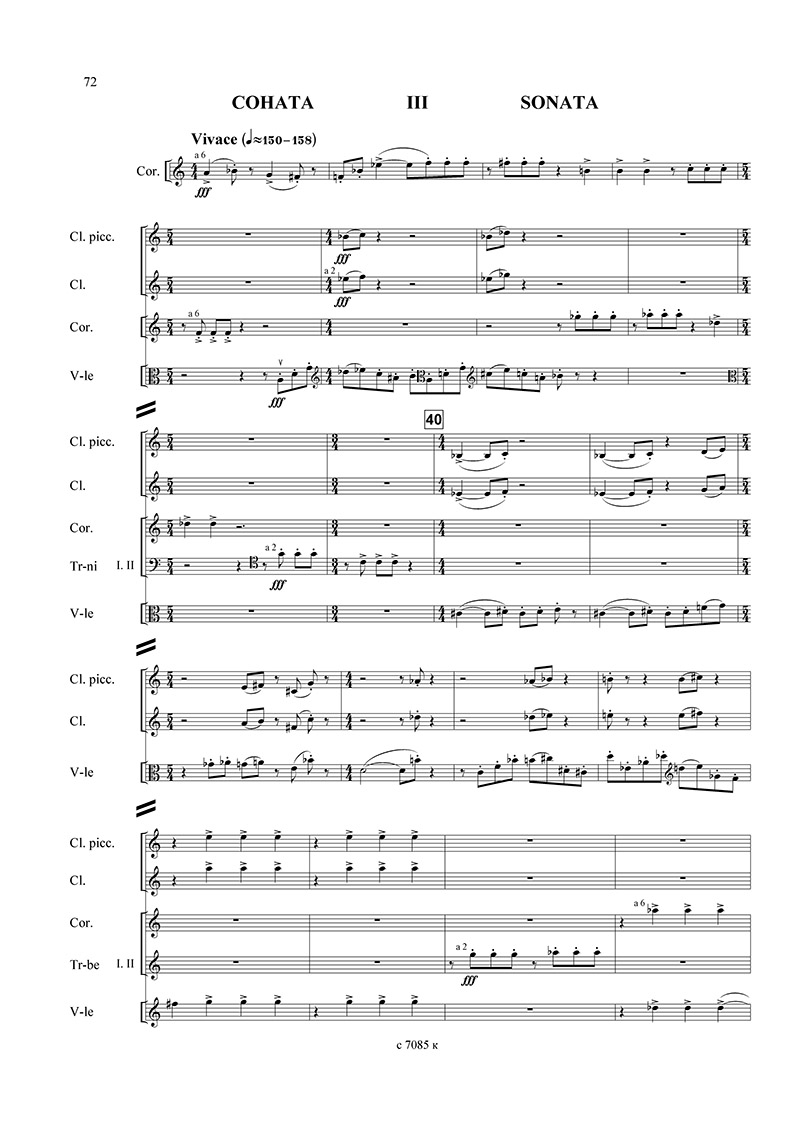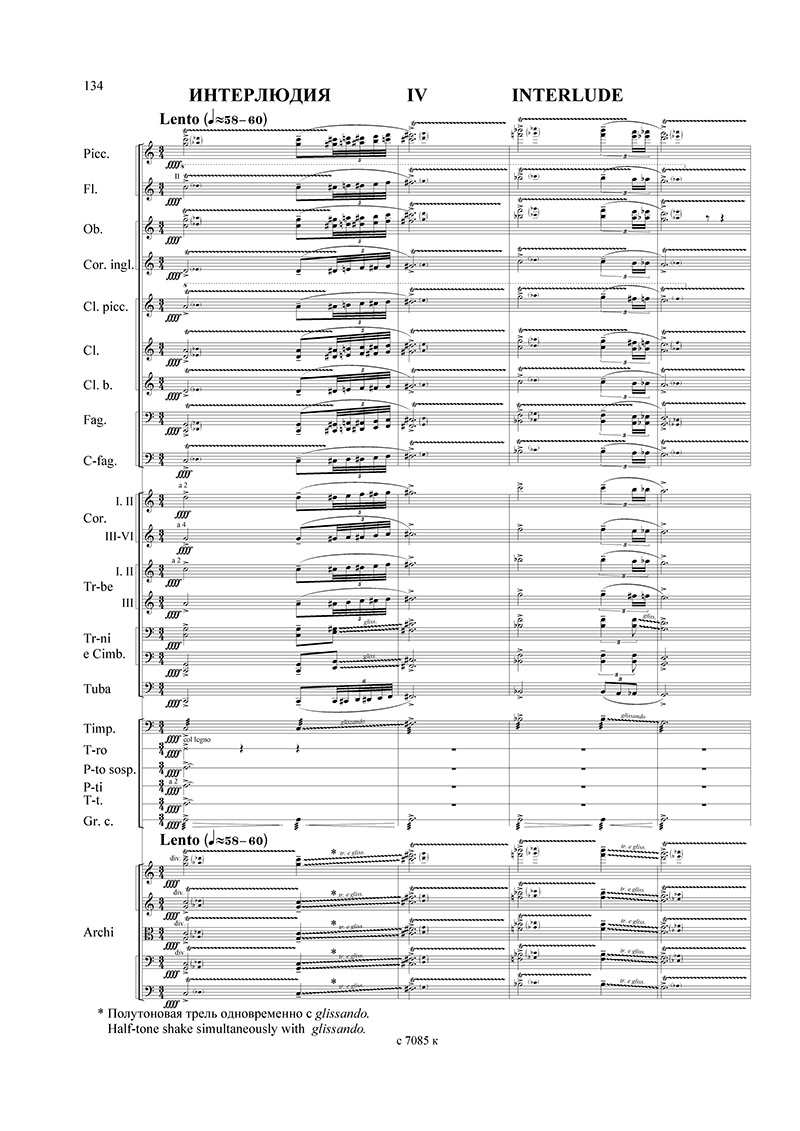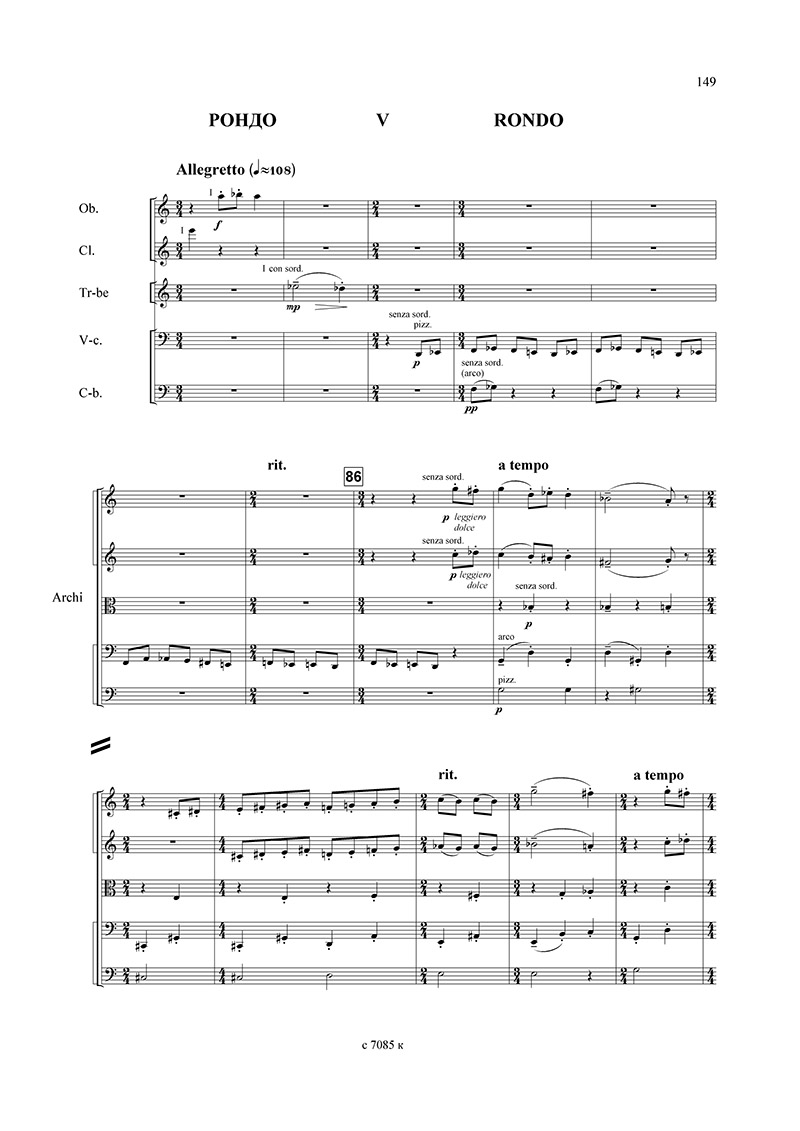
Tishchenko B. Symphony № 5 for full symphony orchestra. Score (Coll. works. Vol. 9а)
- Author:
- Tishchenko B.
- Author (full):
- Boris Tishchenko
- Title (full):
- Collected Works. Volume 9а. Symphony № 5 for full symphony orchestra. Op. 67 (1976). Score
- Number of pages:
- 172
Boris Ivanovich Tishchenko wrote the Fifth Symphony in 1976, a year after the death of Dmitry Dmitrievich Shostakovich. It is the original audio portrait of the genius composer, one of the greatest in the history of humanity, and also an expression of gratitude to the fate for the unique opportunity to be his disciple.
Part I, Prelude. Lento. The long, dramatically concentrated singing of the separate instruments (english horn, clarinet, flute, bass clarinet, horn) reminds the voices of people, who remember and mourn for the deceased artist. In the melodies sounds freely varying Shostakovich’s well-known monogram theme (the Latin names of its sounds form the initials of the composer: DEsCH — DSh). Lonely or several weaving voices are interrupted by the powerful octaves of the whole orchestra, which remind the Beethoven’s image of a heavy concentrated will.
Part II, Dedication. Tempo I. This music can be perceived as a deeply emotional story about the Artist, the sublimity of his thoughts, the tragedy collisions of his life, the courage and integrity of his soul. The freely unfolding sound stream includes the intonations of the monogram theme from the first part. In the effortless movement of individual voices many of their polyphonic weaves (imitations, canons) are born. The music gradually comes from the state of gentle rest to the expression of the ultimate mental tension. But as soon as the long-awaited tranquility sets in, it is interrupted by the accelerating, hard, like a death steps, strikes of the orchestra, alternating with the cold, otherworldly beatings of percussion instruments.
Part III, Sonata. Vivace. The character of music is close to Shostakovich’s angry scherzos from the VIII and X Symphonies. Here are embodied not only the furious revelry of the forces of evil, but also the protest which is born of them and becomes a source of active opposition.
Part IV, Interlude. Lento. After a mortal struggle peace and repose come and the terrible events gradually go into the past. Heavy sliding movements of consonants (trills of almost all instruments, glissando) sound like a groan of earth poured on with blood in the night. But the clarion sounds of the French horns foretell the morning. And it comes with the pastoral song of the English horn - like in Shostakovich’s music, who also used solo horn on the border of disaster and Peace. The melody is picked up by other instruments (oboe, clarinet, flute, flute-piccolo), and its tone becomes more and more enlightened. The orchestra fades away and the melody (bass clarinet and clarinet) acquires a new personality, in which it will appear soon in the final.
Part V, Rondo. Allegretto. The name means not only the compositional structure of the finale, but also its meaning, the return. Tishchenko inсludes to the music the reminiscences from the works of Shostakovich, his predecessors and also from his own earlier works, expressing the idea of the immortality of creativity, the vital force of the successive ties of the past, present and future, the infinity of the true and the goodness. And as it sometimes happens in the finals of some of Shostakovich’s and other composer’s works, the images of childhood suddenly arise in the memory. And the wise illumination of mature experience combine with sincerity of impulses, spiritual purity and unconfined faith in the world, inherent to the early age of human life.
Mikhail Byalik
- Author
- Tishchenko B.
- Author (full)
- Boris Tishchenko
- Title (full)
- Collected Works. Volume 9а. Symphony № 5 for full symphony orchestra. Op. 67 (1976). Score
- Number of pages
- 172
